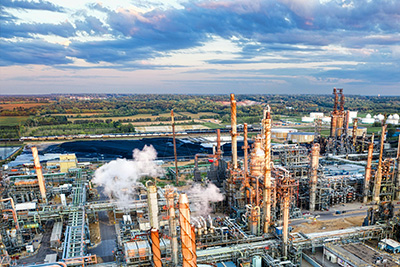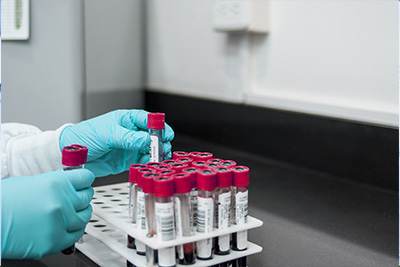-
![Advanced Analytica···]() 2024-12-03 Advanced Analytical Techniques in Re···
2024-12-03 Advanced Analytical Techniques in Re···This study explores the application of advanced analytical techniques for assessing the quality of reverse ester tin. Key methods such as gas chromatography-mass spectrometry (GC-MS) and high-performance liquid chromatography (HPLC) are utilized to analyze the composition and purity of reverse ester tin samples. These techniques enable precise identification and quantification of impurities, thereby enhancing the accuracy of quality testing. The results demonstrate that these analytical approaches significantly improve the reliability and efficiency of evaluating reverse ester tin, ensuring compliance with industry standards and enhancing product safety.
read more > -
![Global Market for ···]() 2024-12-03 Global Market for Reverse Ester Tin:···
2024-12-03 Global Market for Reverse Ester Tin:···The global market for reverse ester tin is experiencing dynamic shifts driven by evolving supply and demand trends. Major producers are expanding their capacities to meet the growing demand, particularly from the electronics and coatings industries. Key regions such as Asia-Pacific are witnessing significant consumption growth, fueled by increasing industrial activities. However, challenges like raw material price volatility and stringent environmental regulations pose risks to market stability. Technological advancements in production processes are expected to mitigate these issues, ensuring sustainable growth in the reverse ester tin sector over the forecast period.
read more > -
![Impact of Catalyst···]() 2024-12-03 Impact of Catalyst Impurities on Rev···
2024-12-03 Impact of Catalyst Impurities on Rev···The efficiency of the reverse esterification reaction is significantly influenced by impurities present in the catalyst. These impurities can lead to side reactions, reducing the yield and purity of the final product. The study investigates how specific impurities affect reaction rates and conversion efficiencies, highlighting the need for highly purified catalysts to optimize process outcomes.
read more > -
![Tin Compounds in R···]() 2024-12-03 Tin Compounds in Reverse Ester Produ···
2024-12-03 Tin Compounds in Reverse Ester Produ···Tin compounds play a crucial role in the reverse esterification process, significantly enhancing the reaction efficiency. These compounds exhibit distinctive properties such as nucleophilicity and Lewis acidity, which facilitate the transformation of carboxylic acids into esters. The use of tin reagents not only accelerates the reaction rate but also improves product yield and purity. However, concerns over the toxicity and environmental impact of tin-based catalysts necessitate the exploration of alternative, more sustainable options for industrial applications.
read more > -
![New Insights into ···]() 2024-12-03 New Insights into the Reverse Ester ···
2024-12-03 New Insights into the Reverse Ester ···The reverse ester tin reaction mechanisms have been elucidated through new experimental and computational studies, offering deeper insights into the catalytic processes. Key findings reveal that tin complexes play a crucial role in facilitating the reaction, with tin's coordination chemistry being pivotal. Theoretical calculations support the proposed mechanisms, highlighting the importance of intermediate species and their impact on reaction pathways. These results enhance our understanding of the reverse ester tin reaction, potentially guiding future catalyst design and optimization in organic synthesis.
read more > -
![Utilizing Tin Cata···]() 2024-12-03 Utilizing Tin Catalysts for Improved···
2024-12-03 Utilizing Tin Catalysts for Improved···The utilization of tin catalysts has been shown to significantly enhance the efficiency of esterification reactions. These catalysts, known for their strong Lewis acidity and ability to form stable complexes with carboxylic acids, facilitate the reaction between alcohols and carboxylic acids, leading to higher yields and faster reaction times compared to traditional catalysts. Studies have demonstrated that tin-based catalysts can be effectively applied in both batch and continuous processes, making them a versatile choice for industrial applications. Additionally, these catalysts exhibit good recyclability, reducing waste and operational costs. Thus, tin catalysts represent a promising advancement in the field of esterification, offering improved process economics and environmental benefits.
read more > -
![Catalyst Durabilit···]() 2024-12-03 Catalyst Durability and Performance ···
2024-12-03 Catalyst Durability and Performance ···The article examines the durability and performance of catalysts in reverse esterification reactions. It highlights how specific catalysts can enhance the efficiency and longevity of these processes, which are crucial for industrial applications. Key factors such as temperature, pressure, and catalyst loading are discussed, along with their impact on reaction yield and catalyst stability over time. The study underscores the importance of selecting appropriate catalysts to optimize both short-term and long-term reaction outcomes in esterification processes.
read more > -
![Technical Specific···]() 2024-12-03 Technical Specifications for Industr···
2024-12-03 Technical Specifications for Industr···The document outlines the technical specifications for industrial-grade reverse ester tin, detailing its chemical composition, physical properties, and performance requirements. It covers key aspects such as tin content, ester type, viscosity,闪存错误,请稍后重试
read more > -
![Quality Assurance ···]() 2024-12-03 Quality Assurance in Reverse Ester T···
2024-12-03 Quality Assurance in Reverse Ester T···Quality Assurance in the synthesis of reverse ester tin processes involves rigorous monitoring and control measures to ensure product consistency and safety. This includes precise temperature and pressure controls, regular testing of raw materials and intermediates, and adherence to standardized protocols. Continuous improvement through employee training and advanced analytical techniques enhances overall process efficiency and product quality. Effective documentation and traceability systems further support compliance with regulatory standards, ensuring the production of high-quality tin ester products.
read more >










